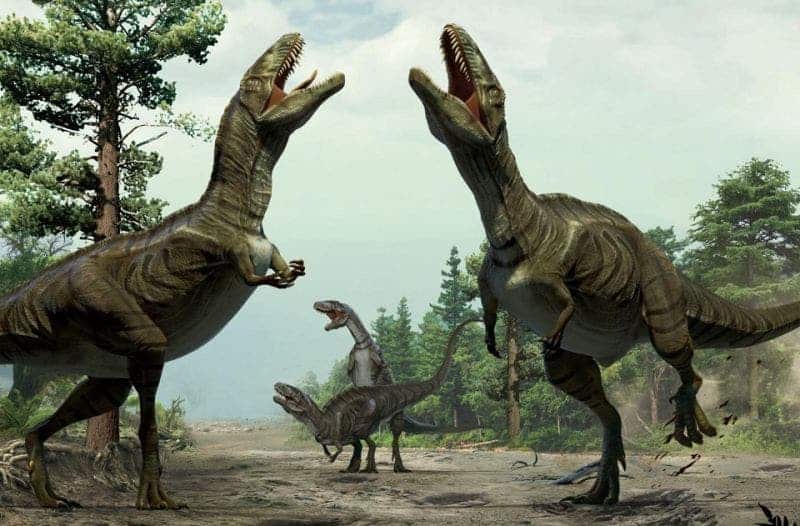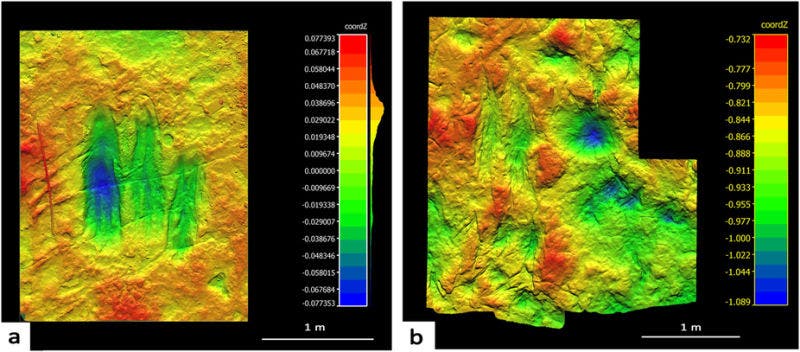
Birds are literally dinosaurs, so many scientists suspect millions of years ago dinosaurs shared similar courtship tactics like fancy plumage or complex dances to impress potential mates. While fossils can teach us so much about how dinosaurs looked and, in some instances, behaved (herd behavior, diet, hunting patterns etc.), inferences on mating rituals have been speculations at best thus far. A paper published in Scientific Reports offers some of the first tantalizing evidence that supports the idea that dinosaurs indeed employed similar courtship displays to modern birds. The researchers at University of Colorado, Denver found tracks etched into sandstone surfaces to create nest displays, hoping to attract a female to mate with. These scrapes are one of a kind, found nowhere else in the world.
Dino foreplay
Dinosaurs were wiped out some 65 millions years ago by an asteroid impact event. Luckily, scores of fossils have been found which allowed us to repiece how more than 900 dinosaur species looked like and even behaved. It’s not just bones and other fragments that lend valuable clues though. Fossilized tracks, for instance, taught us that T-Rex hunted in packs, not alone. Similarly, tracks discovered in the Dakota Sandstone of Colorado across four sites sketch out what dinosaurs mating must have looked like. The largest site features more than 60 scrapes on one sandstone surface.
“The size, depth and distribution of these scrapes is variable,” the study authors wrote. “However, most typically consist of parallel double troughs, comprised of multiple scrapes separated by a raised central ridge. … A few show complete outlines of three-toed theropod tracks, and some show thin aprons of excavated sediment aligned with the long axis of the scrapes.”

These sites look suspiciously similar to a lek – an arena where males perform mating dances to impress females. In our case, dinosaurs males likely dug deeply into the dirt to show of nest making abilities. The nests themselves would have likely been made somewhere nearby the lek.
“The scrape evidence has significant implications,” said Martin Lockley, lead author of the paper. “This is physical evidence of pre-historic foreplay that is very similar to birds today. Modern birds using scrape ceremony courtship usually do so near their final nesting sites. So the fossil scrape evidence offers a tantalizing clue that dinosaurs in ‘heat’ may have gathered here millions of years ago to breed and then nest nearby.”
What other mating or courtship rituals did dinosaurs employed? Sadly, we might never know. If they did something other than scrape the ground, it’s unlikely this behaviour left physical evidence. Even so, as they stand, the findings paint a more accurate picture of how dinosaurs evolved and lived millions of years ago. Watch out for intricate dinosaur dances in the next Jurassic Park movie.
Was this helpful?



